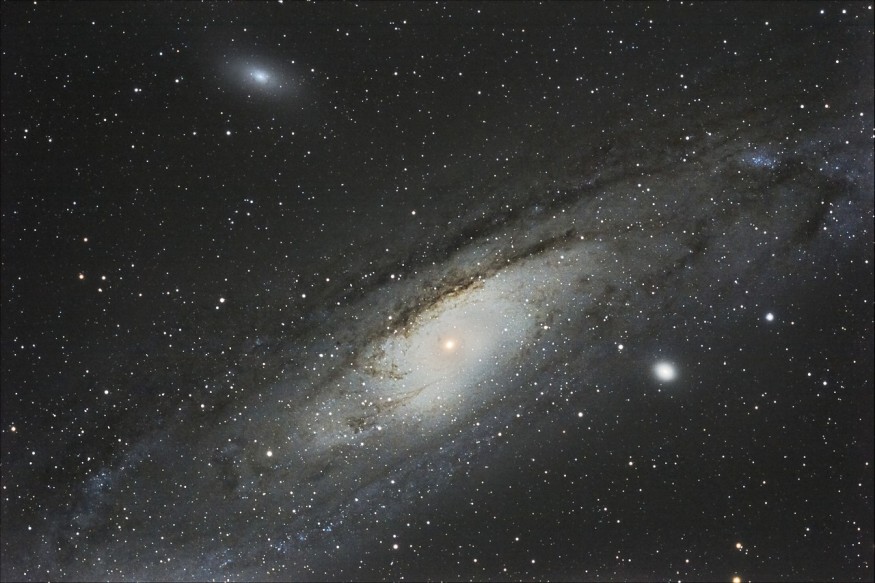There is a growing body of research that galaxies grow large by merging with other galaxies, such as the well-known interacting galaxies of Arp 248. Now, astrophysicists from the University of Sydney together with an international team of scientists discovered evidence that the Andromeda galaxy is a cannibal that grows through intermittent feasting on other galaxies.
The study titled "Chemo-dynamical Substructure in the M31 Inner Halo Globular Clusters: Further Evidence for a Recent Accretion Event," which is currently available on the pre-print server arXiv but will be published in the Monthly Notices of the Royal Astronomical Society, is part of the unexpected findings of two honor students.

Galactic Cannibalism of Andromeda Galaxy
The Andromeda galaxy is Milky Way's nearest galactic neighbor and a new study shows it has consumed other galaxies in the past. Professor Geraint Lewis, the lead author of the study from the University of Sydney, said that they discovered a few years ago in the far outskirts of Andromeda some signs that it had been eaten in large quantities in two distinct epochs.
Lewis said in a press release that the findings of the new study provide a clearer picture of how the universe has come together, revealing that large galaxies have been sporadically feeding in small galaxies.
The team focused on globular clusters, which are older associations of stars that have low metallicity that play a role in galactic evolution but are not yet clearly understood. They are commonly called globulars and are more prevalent in a galaxy's halo while their counterpart called open clusters are found in the galactic disks.
Per Universe Today's report, the team identified a population of globulars in the inner halo of Andromeda that all have similar metallicity, which refers to the elemental makeup of stars in the same region. This means they are older since there were fewer heavy elements in the early universe than there are today.
They named the collection of globulars the Dulai Structure, which translates to black stream in Welsh. It is likely a group of 10 to 20 globulars misaligned with the galaxy's rotation.
The Dulais Structure is also evidence that Andromeda has been feeding on a group of globulars some 5 billion years ago, and the second piece of evidence points to the galaxy feeding on a sub-population of globulars 10 billion years ago.
Is Milky Way the Same?
To the researchers, the Dulais Structure looks like the leftovers from a feeding session and is evidence that massive galaxies merge to produce gigantic displays throughout the universe. Lewis said that they have come to realize over the past few decades that smaller galaxies fall into bigger galaxies and get eaten in galactic cannibalism.
Based on the findings, the team now wants to know if the Milky Way galaxy is the same or different from Andromeda. Lewis wants to come up with a more accurate clock to know when these events occurred because it is needed to create models of how galaxies evolve.
According to Phys.org, the team analyzed data covering the speeds and chemistry of globulars forming the Dulais Structure and created a 2D view. Their next step is to understand distances that will help them construct the history in 3D.
The study on the Dulais Structure came about from two honor students, namely Tim Adams from the University of Sydney and Yuan Li from the University of Auckland who stumbled upon evidence of leftovers in the galaxy's spiral much to Lewis' surprise. Their findings opened a new door of understanding although it is not yet telling scientists exactly what it is so more work is needed.
RELATED ARTICLE : Hubble Space Telescope Inspects Two of the Galaxies in a Galactic Triplet 200 Million Light-Years Away
Check out more news and information on Space in Science Times.
© 2025 ScienceTimes.com All rights reserved. Do not reproduce without permission. The window to the world of Science Times.










